Anki Overdrive
While not being directly game related Overdrive does have distant relations and while not really being hardware, it really is kind of hardware. So, as Monty Python would say: now for something completely different.
In the Beginning…
When I was a boy all the cool kids had Scalextric, it was traditional in a sense that young boys would want to spend their free time blowing fluff from the insides of model cars, decorating them with transfers and racing with slotted tracks full of live electricity straight from the grid. Then there was the echelon above the cool kids, the nerdy kids, the ones that hung out in youth centres playing on massive tracks inspired by real life examples such as Brands Hatch.
If there was a Venn diagram of the two groups I probably sat squarely in the middle, not obsessive enough to actually join a group, but tickled enough to think about it. Anyway, there were also the early adopters, the kids that got hold of TCR, (Total Control Racing) a small scale racing track that didn’t use slots, it used magnets and some kind of related black magic to make cars switch lanes on command.
Like all world changing black magic TCR got forgotten in time being lost to history while waiting for a successor, now that successor has arrived and it is known as Anki Overdrive.
Overdrive is a perfect marriage between powered model car racing and the app driven world of today. You can’t shake a stick without finding ‘an app for that’ and Overdrive has embraced this culture.
Smart Tracks
As a product, the starter kit has everything you need, the packaging is superb and while lightweight the sci-fi fantasy vehicles are well detailed. Once it is out of the box the kit can be put together in seconds, for anybody remembering fighting with track connections, ensuring the plastic tabs didn’t break and that he metal tabs could connect and conduct current. This track is a thing of beauty, the sections smartly snap together with magnets, they hold well enough to take an errant clumsy foot and a flexible enough to add a humpback with an empty toilet roll. Straight from the box the tracks can be turned a number of different ways, ovals, loops, figure-eights with flyovers and more. Add a couple of extension pieces and the world gets exponentially bigger. Of course the ease of putting it together also means it a breeze to put away at bedtime, no more lounge cluttering racetracks that never get put away.
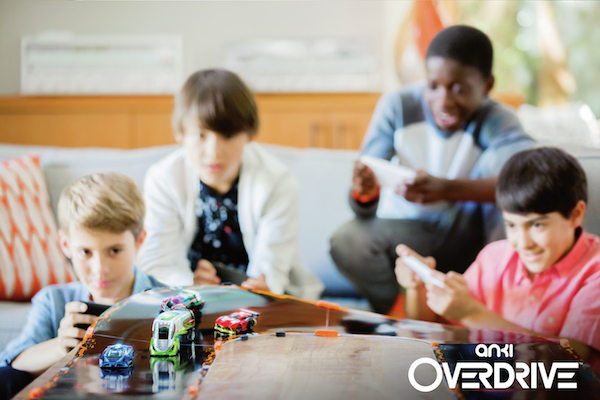
Under the surface the tracks have a multitude of infra red patterns encoded which the cars can translate via their inbuilt IR Camera, they actually scan them at 500mhz constantly feeding back info on their position as they travel the course. The starter set comes with a couple of flyover supports, but there are jump and landing ramps available to extend your set which will satisfy the destructive child in all of us.
Its also worth mentioning that the track is not powered, so there is no cable to the mains and the cars work with the app to know their boundaries. It really is a touch of sci-fi when you see the cars run a track for their setup scan (ON THEIR OWN!), they drive of together to ‘learn’ the track. The track that they learn appears piece by piece on your app screen until complete, then they spin off at speed to test the envelope and make sure its all logged in. When they are done, they actually stop at the start/finish line.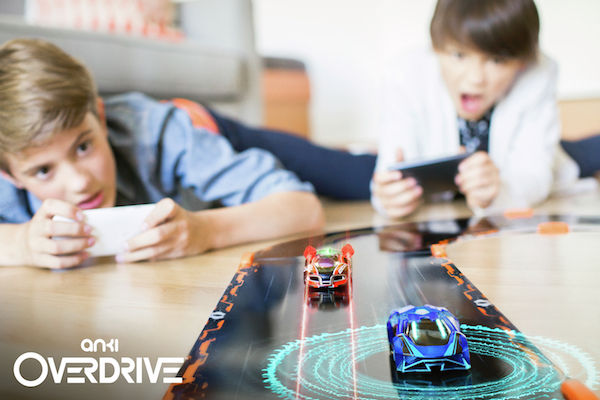
Smart SuperCars
The cars are the stars, no doubt about that. At first glance in the shops they could be considered expensive, but there is a lot going on under the hood. They all powered by their own battery they need charging prior to racing and will generally need a re-charge every couple of races. The only complaint from my younger play-testers was that we seemed to spend more time caring the cars than racing them. However once they are on the blocks and a game mode has been selected its on like Donkey Kong.
 The magic comes from a combination of a mini computer and an Infra Red scanner that is constantly swapping information with the app, this is where the AI cars come into being. The positional scanning relays the cars info, the AI ‘personality’ – read ‘Stats’ of various Commanders can make different decisions based on the situation, position of another car, speed and the actual track itself. Throw into that mix the use of weapons when playing a battle mode or King of the Hill and you suddenly find yourself enjoying a single player evening of Overdrive, where the only way to play Scalextric solo was with a controller in each hand.
The magic comes from a combination of a mini computer and an Infra Red scanner that is constantly swapping information with the app, this is where the AI cars come into being. The positional scanning relays the cars info, the AI ‘personality’ – read ‘Stats’ of various Commanders can make different decisions based on the situation, position of another car, speed and the actual track itself. Throw into that mix the use of weapons when playing a battle mode or King of the Hill and you suddenly find yourself enjoying a single player evening of Overdrive, where the only way to play Scalextric solo was with a controller in each hand.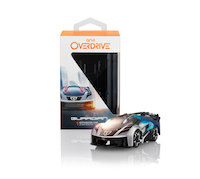
Pretty much everything to do with the cars is app controlled, the app knows how much juice they have and will tell you when to charge them on the included charging pad. The app controls acceleration, braking, weapons (depending on game mode) and changing lanes by a deft flick of your iOS or Android device. In practice hurtling around the tracks at full speed makes strategic changing lanes a challenge, but its nice when it works for a last minute nudge across the line. At which point the losing car immediately pulls up, brake lights flaring while the winning car goes off on its own victory laps – weaving across the road and all lights flashing. Its a great touch that reminds you how far this kind of toy tech has come.
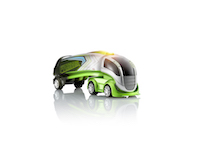 The range of vehicles is expanding and apart from the sexy Fast and Furious set, there are some nice Big Rig trucks that come into play with specific game modes. All the vehicles are sleek sci-fi designs, that tie into the themes of the AI racers otherwise known as Commanders, each with their own set of races, tracks and challenges that can be accessed via the app.
The range of vehicles is expanding and apart from the sexy Fast and Furious set, there are some nice Big Rig trucks that come into play with specific game modes. All the vehicles are sleek sci-fi designs, that tie into the themes of the AI racers otherwise known as Commanders, each with their own set of races, tracks and challenges that can be accessed via the app.
Playing the Game Modes
There are plenty of game modes on offer, to be honest we gravitated to Racing and Time Trials the most as it made more sense on a smaller setup, the other game modes such as Battle and King of the Hill rely on your opportunity to out manoeuvre the AI or other player, getting into position to use your weapons. Which at speed on a small track is pretty hard to do. The Supertrucks come with their own game mode where players try to ‘Takeover’ the truck first, which looks like fun, but not as much fun as just smashing round the track in a Big Rig.
Of course the app tracks your stats through your Anki account and there is of course a coin bank that builds up from winning events, which you can spend on upgrades and customisations for your vehicles. Game modes that utilise weapons or mine drops obviously do not appear on the cars themselves, but are visualised on the app screen – which is encouraging as it does still require a touch of imagination to implement them in the heat of a race.
Games can be played with 4 players or just against the AI and the Bluetooth technology that keeps the cars and apps talking to each other is pretty much without fault. So response time and communication is slick.
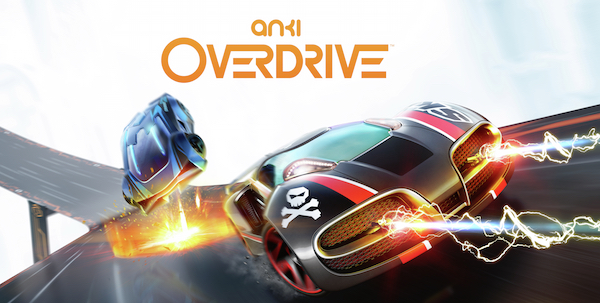
In summary
Overdrive is brave new technology, for something that looks at first glance like an expensive slot car racer without slots there is so much more on offer. Not only does the wealth of game modes supply a variation of play for all tastes, the technology behind the cars and tracks is groundbreaking and has certainly not stopped evolving yet. Neither has your own play-set, Commanders learn and make better decisions, you upgrade your vehicles the more you play – so the garage full of cars you end up with six months from now will have been on a journey and a half.
I can only imagine where this will lead in a few more iterations, the possibilities for the developers are most likely endless, the opportunities for the consumer are exciting.
Many thanks to Anki Overdrive for supplying the Overdrive Starter Kit for review.


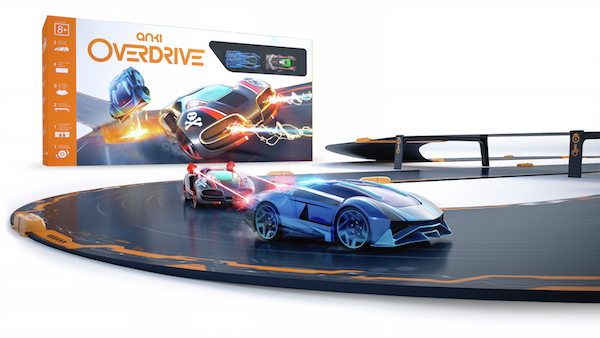
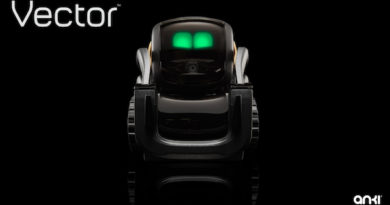
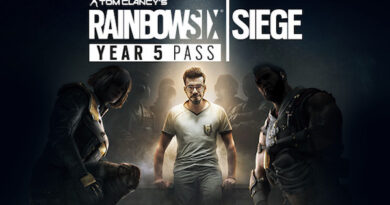

Thanks Gerard, constantly amazed at where we are today vs the things I grew up on.
Nice write up, Richard. I haven’t played the Overdrive but I had Anki’s Cosmo robot and he’s hillarious with what he can learn from his human masters.